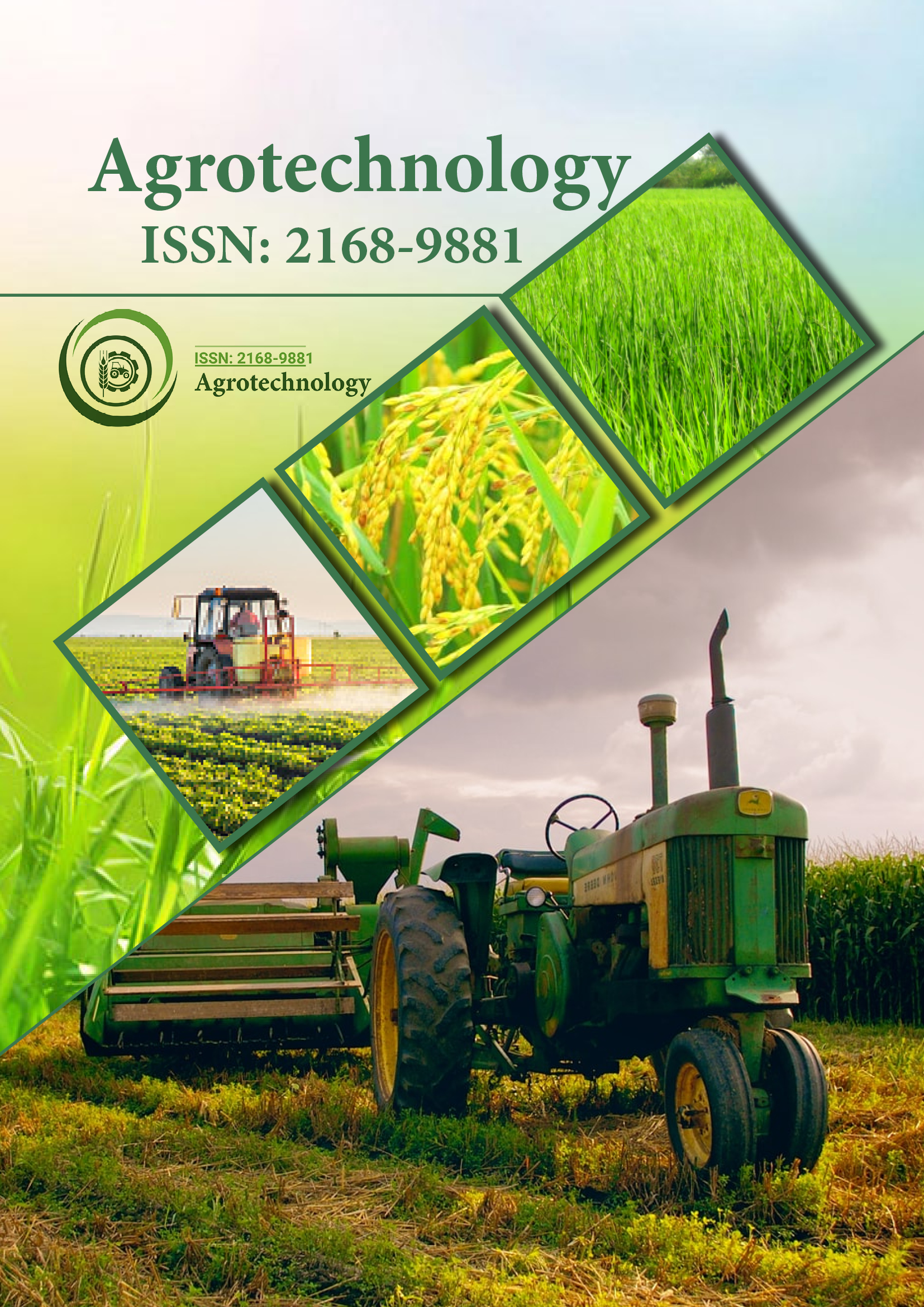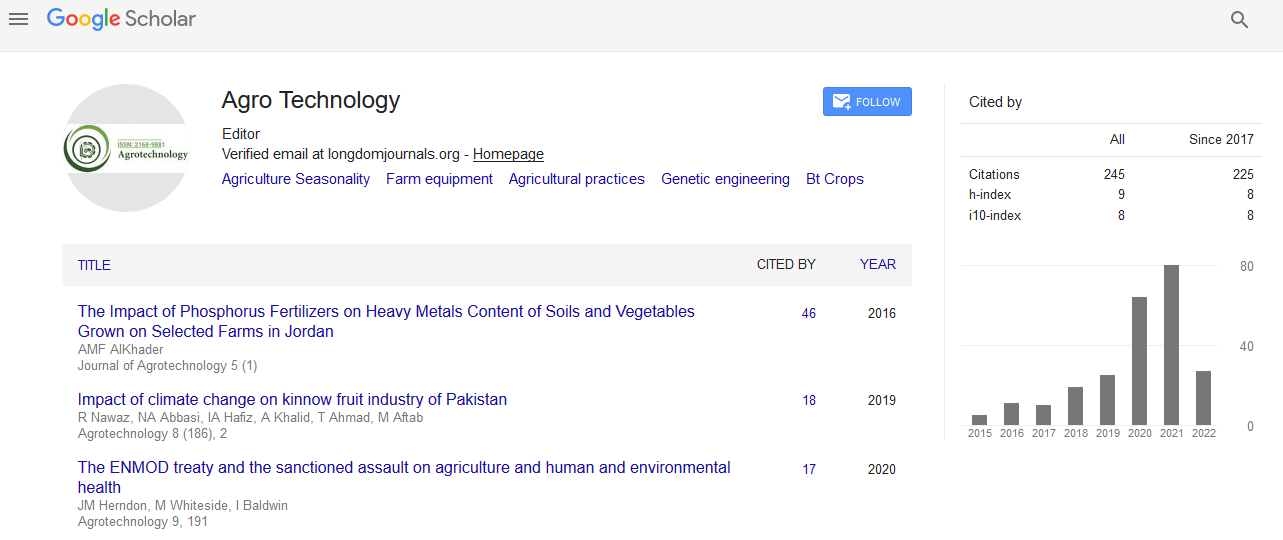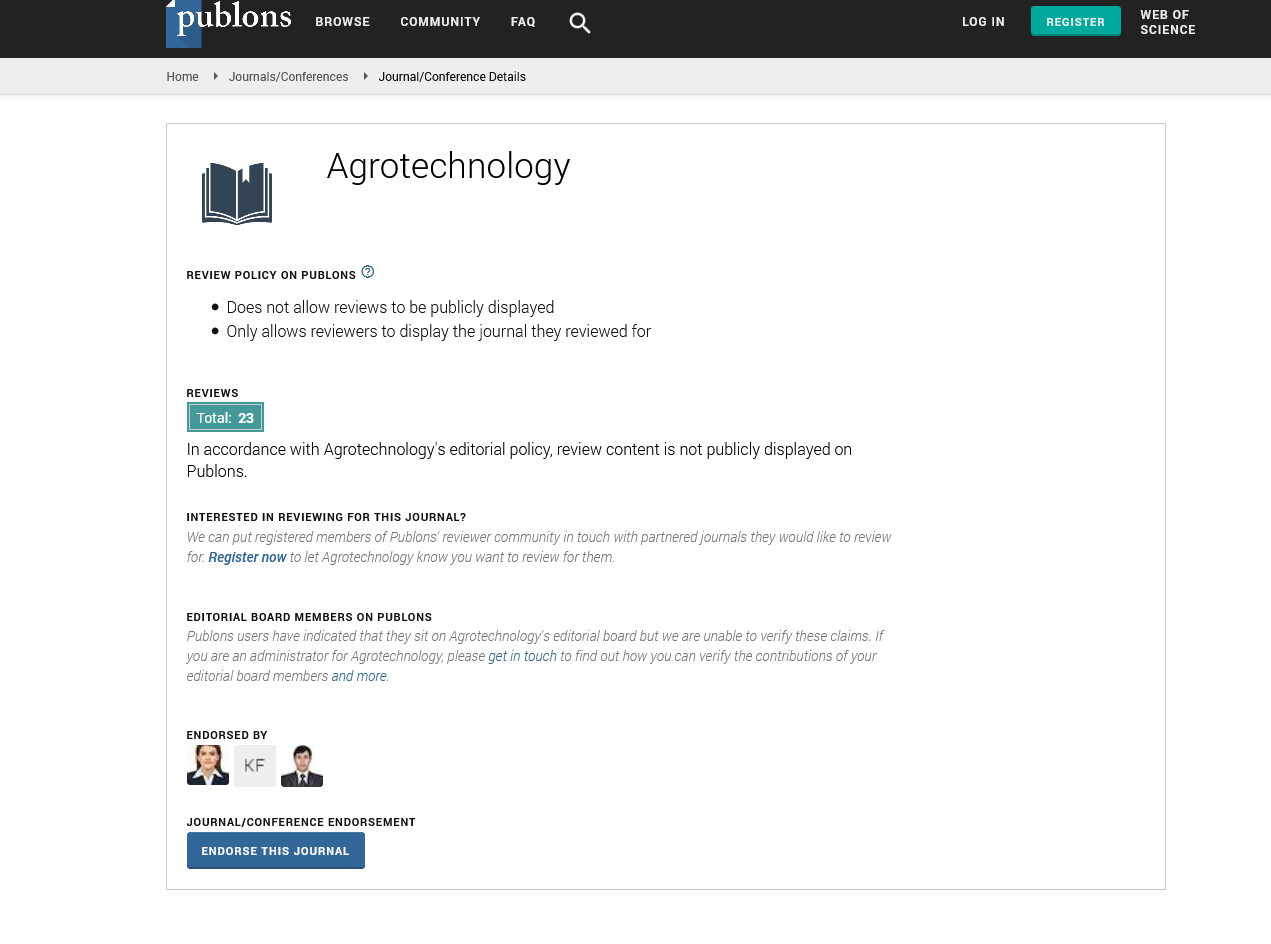Indexed In
- Open J Gate
- Genamics JournalSeek
- Academic Keys
- ResearchBible
- Cosmos IF
- Access to Global Online Research in Agriculture (AGORA)
- Electronic Journals Library
- RefSeek
- Directory of Research Journal Indexing (DRJI)
- Hamdard University
- EBSCO A-Z
- OCLC- WorldCat
- Scholarsteer
- SWB online catalog
- Virtual Library of Biology (vifabio)
- Publons
- Geneva Foundation for Medical Education and Research
- Euro Pub
- Google Scholar
Useful Links
Share This Page
Journal Flyer

Open Access Journals
- Agri and Aquaculture
- Biochemistry
- Bioinformatics & Systems Biology
- Business & Management
- Chemistry
- Clinical Sciences
- Engineering
- Food & Nutrition
- General Science
- Genetics & Molecular Biology
- Immunology & Microbiology
- Medical Sciences
- Neuroscience & Psychology
- Nursing & Health Care
- Pharmaceutical Sciences
Perspective - (2024) Volume 13, Issue 3
Utilization of Personal Safety Equipment and Weedicides for Farming
Jiahui Zhang*Received: 23-Aug-2024, Manuscript No. AGT-24-26685; Editor assigned: 26-Aug-2024, Pre QC No. AGT-24-26685 (PQ); Reviewed: 10-Sep-2024, QC No. AGT-24-26685; Revised: 17-Sep-2024, Manuscript No. AGT-24-26685 (R); Published: 25-Sep-2024, DOI: 10.35248/2168-9891.24.13.378
Description
Weedicides, or herbicides, are essential tools in modern agriculture, playing a important role in controlling unwanted plants and ensuring crop productivity. However, their use also poses significant risks to human health and the environment. The application of Personal Protective Equipment (PPE) is vital in mitigating these risks, particularly for farmers who are frequently exposed to these chemicals. In various regions, where cocoa farming is a foundation forthe economy, understanding the knowledge and patterns of weedicide and PPE usage among farmers is essential for promoting safe agricultural practices and safeguarding both farmers' health and environmental sustainability.
Cocoa farming is predominantly carried out by smallholder farmers, who often face numerous challenges, including limited access to resources, education, and healthcare. The reliance on weedicides is common due to the labor-intensive nature of manual weeding and the necessity to maintain crop health and yields. However, the proper use of these chemicals requires knowledge about appropriate application techniques, dosage, and safety measures. A comprehensive assessment of knowledge and patterns of weedicide and PPE usage among cocoa farmers in some Ghanaian communities reveals several key insights. Firstly, it is evident that while farmers are generally aware of the benefits of using weedicides, there is a significant gap in their understanding of the associated risks and safe handling practices. Many farmers lack formal education on pesticide use, relying instead on anecdotal information or advice from peers and local vendors. This knowledge gap can lead to improper application techniques, such as incorrect dosages or mixing methods, which not only reduce the effectiveness of the weedicides but also increase the potential for harmful exposure.
Moreover, the study shows that the use of PPE among cocoa farmers is inconsistent and often inadequate. Personal protective equipment, such as gloves, masks, goggles, and protective clothing, is essential for minimizing direct contact with hazardous chemicals. However, several factors contribute to the low adoption rates of PPE. One significant barrier is the cost; many smallholder farmers operate on tight budgets and may prioritize immediate farming needs over investing in protective gear. Additionally, there is a lack of availability of PPE in local markets, making it difficult for farmers to access these essential items. Cultural and behavioral factors also play a role in the patterns of PPE usage. In some communities, there is a perception that wearing protective equipment is unnecessary or overly cautious. This attitude can be influenced by a lack of visible immediate health effects or a general underestimation of the risks associated with chemical exposure. Furthermore, in the hot and humid climate of various regions, wearing PPE can be uncomfortable, leading farmers to forgo its use despite understanding its importance.
The assessment highlights the need for targeted interventions to address these challenges and promote safer weedicide usage practices among cocoa farmers. One effective strategy is the implementation of comprehensive education and training programs. These programs should focus on increasing farmers' knowledge about the risks of weedicide exposure, proper application techniques, and the importance of PPE. Extension services and agricultural organizations can play a pivotal role in delivering this training, utilizing demonstrations, workshops, and informational materials tailored to the local context. In addition to education, improving access to affordable PPE is important. Subsidies or financial assistance programs can help lower the cost barrier for farmers, making it more feasible for them to purchase the necessary protective gear. Establishing local supply chains for PPE can also ensure that these items are readily available in farming communities. Collaboration with local vendors and cooperatives can facilitate the distribution of PPE and ensure that farmers have consistent access to the equipment they need.
Another important aspect is the enforcement of regulations regarding pesticide use and safety standards. Strengthening regulatory frameworks and ensuring that farmers adhere to safe practices can help reduce the risks associated with weedicide use. This may include regular inspections, certification programs for farmers who demonstrate safe usage practices, and penalties for non-compliance. Community engagement and peer support networks can also be effective in promoting safe weedicide usage. Farmers often rely on each other for advice and support, and leveraging these social networks can help disseminate information and best practices. Establishing farmer groups or cooperatives that prioritize safety and health can create a culture of responsible pesticide use. Peer-to-peer training and support can reinforce the importance of PPE and safe application techniques, making it a collective effort rather than an individual responsibility.
Monitoring and evaluation are essential components of any intervention aimed at improving weedicide and PPE usage. Regular assessments can help track progress, identify areas for improvement, and ensure that the interventions are having the desired impact. Data collected from these assessments can inform policy decisions and guide future initiatives, creating a continuous cycle of improvement.
In conclusion, the assessment of knowledge and patterns of weedicide and PPE usage among cocoa farmers underscores the critical need for targeted interventions to promote safe agricultural practices. While farmers are generally aware of the benefits of using weedicides, there is a significant gap in their understanding of the associated risks and safe handling practices. Inconsistent and inadequate use of PPE further exacerbates these risks. Addressing these challenges requires a multifaceted approach, including education and training, improved access to affordable PPE, stronger regulatory enforcement, community engagement, and continuous monitoring and evaluation. By implementing these strategies, it is possible to enhance the safety and health of cocoa farmers, protect the environment, and ensure the sustainability of cocoa farming.
Citation: Zhang J (2024). Utilization of Personal Safety Equipment and Weedicides for Farming. Agrotechnology. 13:378.
Copyright: © 2024 Zhang J. This is an open access article distributed under the terms of the Creative Commons Attribution License, which permits unrestricted use, distribution, and reproduction in any medium, provided the original author and source are credited.


